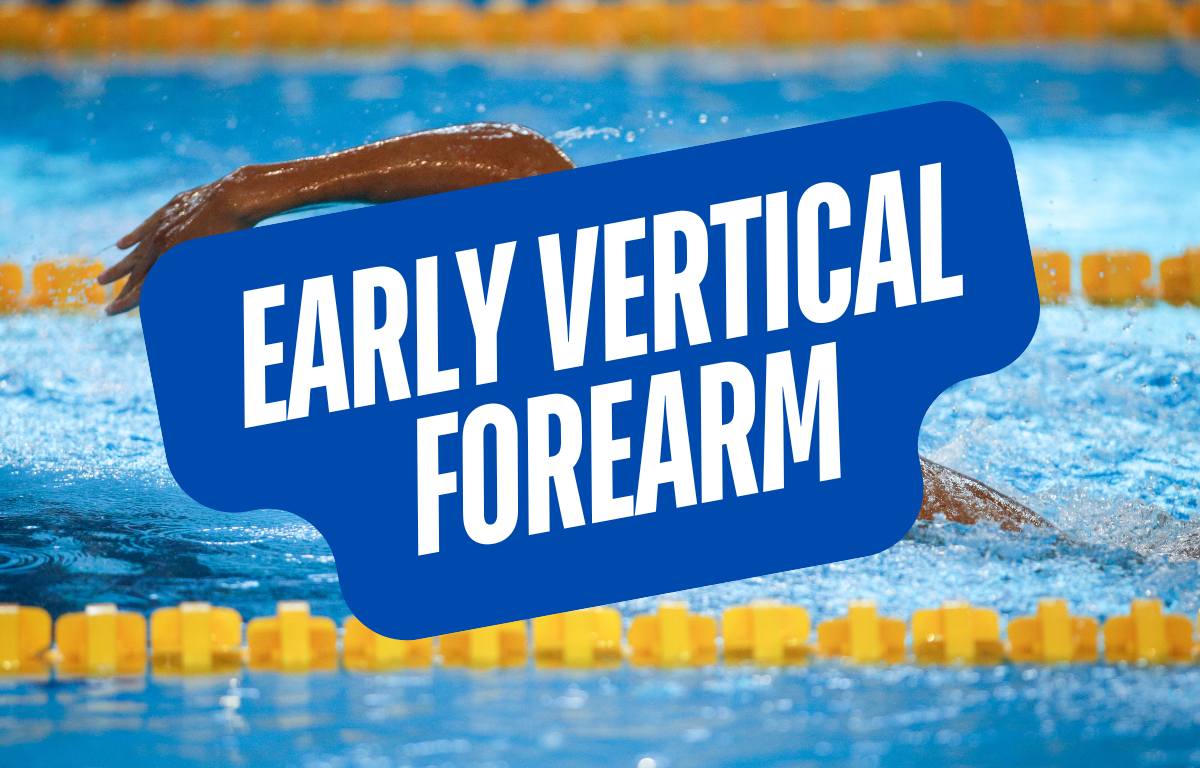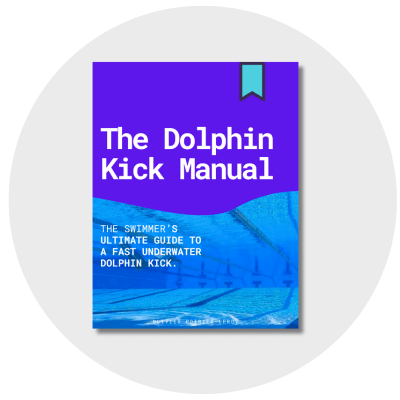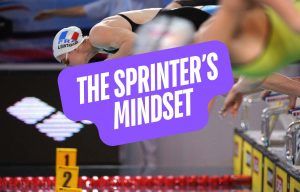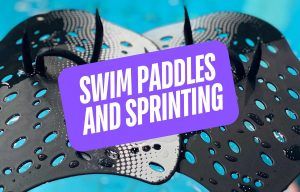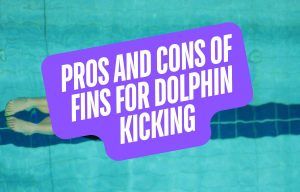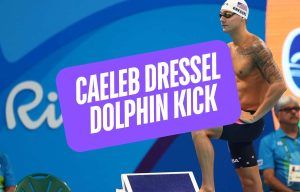Hint: It’s Not Really About the Forearm
If you’ve ever been asked/told/yelled to “grab more water” when swimming freestyle, but didn’t know what in the chlorinated heck your coach was talking about, you aren’t alone.
Water is, well, slippery.
It flows, rushes, and slips through and around your fingers and hands, eternally playing hard to get.
And one of the keys to a successful freestyle stroke—we are told over and over—is that shiny and high-velocity early vertical forearm.
But here’s the twist: EVF isn’t really about the forearm.
Early vertical forearm is important because it places the hand into a powerful and propulsive position more quickly, leading to faster swimming and less wasted effort.
In this article, we’ll break down:
- What EVF is
- Why it’s so fundamental to fast swimming
- How to improve it with drills, mobility work, and more
Let’s get vertical.
What is Early Vertical Forearm?
Early vertical forearm refers to the alignment of the lower arm, including the forearm and hand, so that it can quickly increase propulsion during the pull phase of the stroke.
It’s where the swimmer rotates the forearm into a vertical position after the hand enters the water—so that the forearm and hand are pushing water backwards and not down.
But despite the name, the power of a kick-butt EVF is less to do with the forearm and mostly to do with your hands.
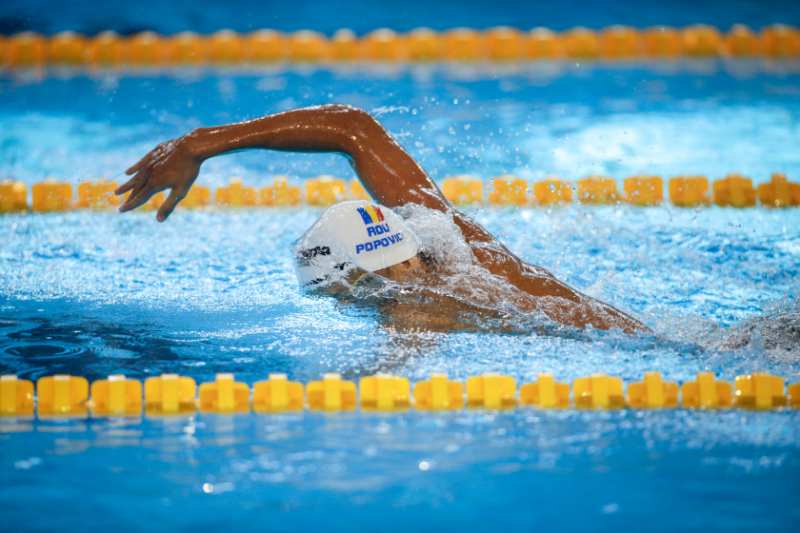
Why Early Vertical Forearm Matters
The hands are the primary driver of propulsion during the pulling motion of the freestyle stroke.
In a review, Takagi et al., (2021) found that:
- The hand contributes 90-97% of the propulsive force during the arm pull of the freestyle stroke
- The forearm adds just 3-10%
- The upper arm? Almost negligible force, and worse, if misaligned, increases frontal drag and slows us down
So while the term EVF gets thrown around a lot, the value in this particular kinematic factor is more about setting up the hand and not necessarily a focus on the forearm (even though a vertical forearm naturally yields a vertical hand position).
According to Takagi et al., the hand is responsible for 90-97% of the propulsive thrust during the freestyle pull.
I find that swimmers often fixate on a high elbow and vertical forearm when trying to improve their EVF and ignore hand placement.
They over-rotate the shoulder to get more height with the elbow, or forget to position the hand firmly after the forearm has gone vertical. These can be a detour from what the real focus should be.
And that is:
Getting handsy with the water and position the palms and fingers to push water backward ASAP.
Tips for an Early Vertical Forearm That Moves You
Here are some cues, drills, and mobility exercises to help you improve early vertical forearm:
Position the hand for propulsion
The earlier your hand is facing backward, the sooner it starts propelling you forward.
While some lift in the front of the pull phase can be good, swimmers should be focused on grabbing the everlasting oxygen molecules out of the water and pulling themselves through it with palms facing backward.
Keep a firm wrist angle. No floppy wrists or soft fingers. Grab that water like it owes you money.
Enhance mobility to position the hand
EVF isn’t a natural arm position. It requires swimming with a high elbow/early vertical forearm in the water (acting as a dynamic stretch) or dedicated mobility work outside the pool.
The most specific way to loosen up the EVF while dry is with a stability ball. Get into a quadruped position and place the forearm and hand on a stability ball and roll forward, forearm and hand wrapping on the far side of the stability ball.
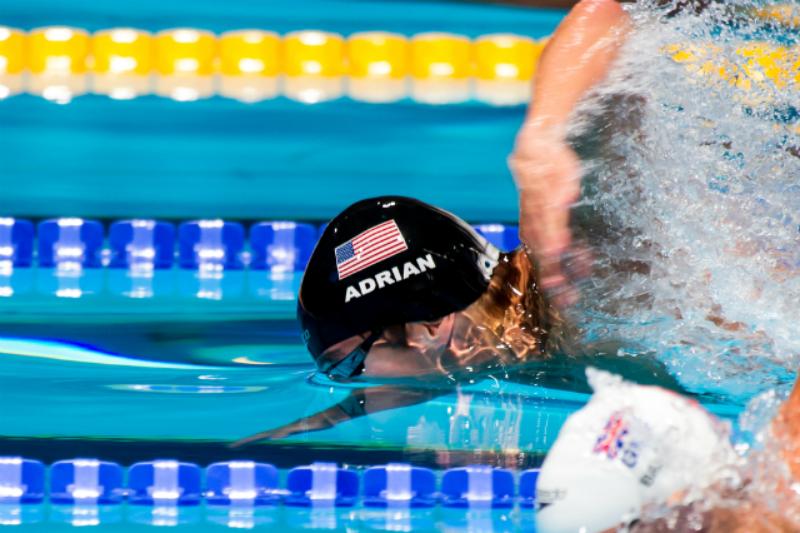
This mimics the EVF motion and helps build muscle memory for when you are in the pool.
Slowly roll through the movement to grease the neural pathways for EVF success.
Scull to build hand awareness
Sculling is one of the best drills swimmers have at their disposal to improve EVF and feel for the water. By performing tight, figure-eight movements with the hands, you improve proprioception and that mythical feel for the water.
Grab a swimmer’s snorkel, get into a horizontal body position, with a neutral head and spine, extend the arms, and play and scull in that EVF zone.
Keep constant pressure on the water and test different elbow and forearm angles to simulate different parts of the pull.
EVF-friendly drills
Drills are your buddy when it comes to developing greater awareness around the early vertical forearm.
Besides sculling, give these freestyle drills a shot to highlight better hand and forearm position:
- Closed-fist freestyle: Closed fist freestyle is as simple and explanatory as it gets: ball up your fists and force your forearms to carry the load, encouraging a more vertical forearm. Forces swimmers to use their forearms and high elbows to catch water.
- Long dog freestyle: One of my favorites. Long dog freestyle is an extension doggie paddle, with swimmers doing a full recovery under the surface of the water and returning their hands to the point of hand entry. Awesome for encouraging a precise catch, higher elbow, and vertical forearm.
Pair these drills with regular swimming (e.g. 25 closed fist + 25 swim) to transfer that new and shiny EVF to your newly-upgraded stroke.
The Bottom Line
Swimmers understand the importance of superior technique for fast swimming.
EVF is one of those technical factors that allows our hands do more of what they are designed to do… Pull us through water faster than ever.
So, when we:
- Get that forearm in a vertical position early
- Minimize drag from the upper arm
- Build sensory awareness through sculling and drills
- And expand range of movement in the shoulder and elbow joints
…we unlock more propulsion and speed from our freestyle.
Get vertical with the forearm and hands, and unlock more horizontal speed.
Happy swimming!
More Technique Articles
6 Tips to Improve Your Distance Per Stroke. Ready to get more efficient in the water and increase distance per stroke? Here are some proven tips for increase stroke length with your swimming.

